Honey gourami (Trichogaster chuna) are a popular freshwater fish known for their vibrant colours and peaceful temperament. Native to the calm waters of South Asia, they are an ideal choice for aquarists of all skill levels.
Their manageable size, usually reaching up to 8cm, coupled with their adaptability to various tank environments, make them a favourite in home aquariums. Requiring a well-balanced diet and consistent water parameters, honey gourami’s thrive in carefully maintained habitats. This comprehensive guide is designed to offer insights into their care, from feeding to breeding, enabling you to enjoy the beauty and grace of this delightful species in your aquarium.
Table of Contents
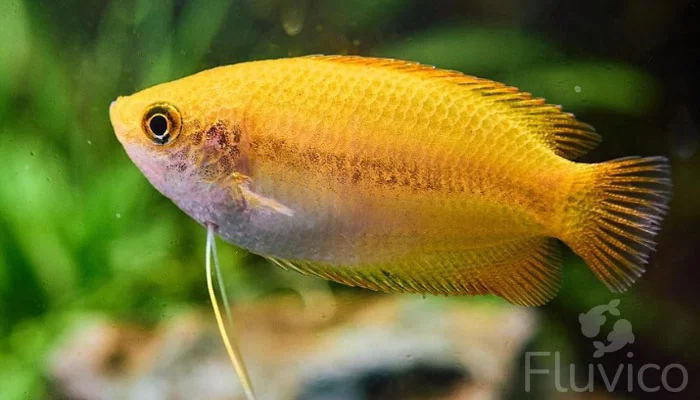
Stats and Details
| Honey Gourami Fact: | Details: |
| Scientific Name: | Trichogaster chuna |
| Care Level: | Easy to Moderate |
| Native Region: | Freshwater regions of Northeast India and Bangladesh |
| Lifespan: | Up to 8 years in optimal conditions |
| Size: | Up to 8 centimetres |
| Family: | Osphronemidae |
| Diet: | Omnivore |
| Minimum Tank Size: | 60 litres for a pair or small group |
| Compatibility: | Peaceful community: Suitable with similarly-sized non-aggressive species |
What are Honey Gourami?
Honey gourami’s are small, colourful freshwater fish admired for their beauty and gentle nature. Part of the Trichogaster genus, they originate from the slow-moving waters of India, Bangladesh, and Burma. Growing up to 8cm in length, their distinctive honey-yellow colouring and delicate, feeler-like fins are characteristic features. Well-suited for community tanks, honey gouramis get along with other non-aggressive fish, making them a great option for both novice and experienced aquarists.
Their care requirements, while straightforward, do need attention to detail, particularly concerning water quality and diet. As you delve further into this guide, you’ll learn how to provide the perfect environment for these tranquil and captivating fish.
Appearance and Physical Characteristics
Appearance and Size
Honey gouramis boast an appealing appearance that sets them apart in the aquarium world. Their name derives from the distinctive honey-yellow hue that predominantly adorns their bodies, often accompanied by delicate shades of orange and brown. The males may exhibit a brighter colour palette, especially during breeding season. With slender bodies and a graceful, streamlined shape, honey gouramis are truly a sight to behold.
Size is another factor that contributes to their popularity. Typically, they grow up to 8cm in length, making them suitable for a variety of tank sizes. Their manageable size, coupled with their enchanting appearance, make honey gouramis a delightful addition to any aquarium. Whether you’re a seasoned fish enthusiast or just beginning your aquatic journey, their aesthetic appeal and modest size requirements provide an inviting and accessible experience in fishkeeping.
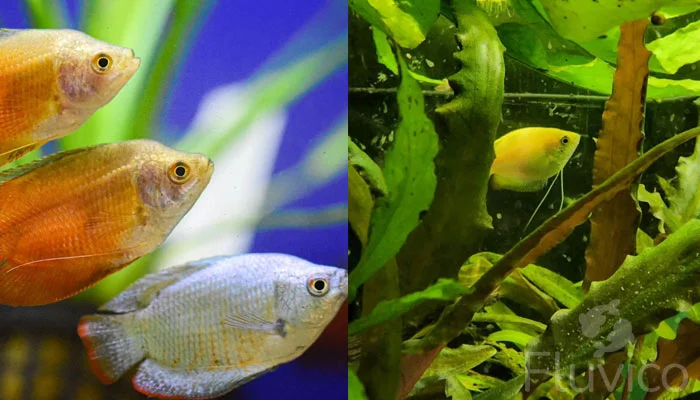
Sexing
Sexing honey gouramis, or determining their gender, is relatively straightforward and an essential aspect for those interested in breeding or understanding their fish’s behaviour. Male honey gouramis usually display a more vibrant colouring, especially during mating periods, with shades of rich orange or red. They often have a more extended dorsal fin, giving them a somewhat pointed appearance.
In contrast, female honey gouramis tend to be more modest in colour, often displaying a softer, muted honey or pale yellow hue. Their dorsal fins are generally shorter and rounder as well.
Understanding these differences not only contributes to successful breeding but also aids in creating a harmonious tank environment. By recognising the gender-specific traits of honey gouramis, aquarists can provide suitable care and accommodate the unique needs of both males and females.
Lifespan and Origins
The honey gourami, with its delightful appearance and gentle disposition, originates from the slow-moving freshwaters and rice paddies of South Asia. Specifically, these fish are native to countries like India, Bangladesh, and Burma. They thrive in densely planted environments that mirror their natural habitats, allowing them to explore and interact with their surroundings.
As for their lifespan, honey gouramis are known to live up to 5 to 8 years when provided with optimal care. This includes maintaining proper water parameters, offering a nutritious diet, and creating an environment that caters to their social and physical needs.
The longevity and fascinating origins of the honey gourami reflect its adaptability and enduring appeal. By understanding where these fish come from and the conditions that promote a healthy lifespan, aquarists can fully appreciate and cultivate the richness that honey gouramis bring to the aquarium hobby.
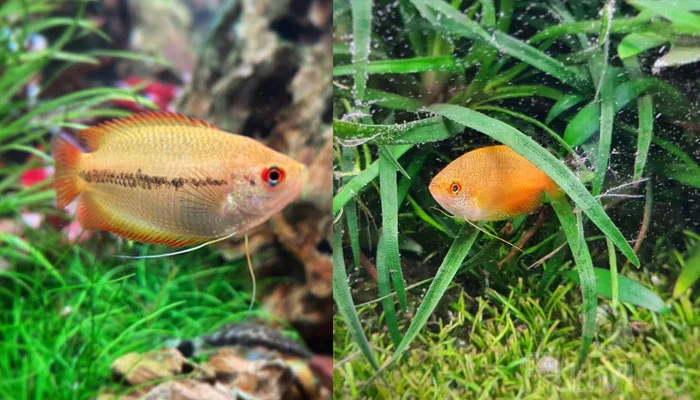
Behaviour & Temperament
Honey gouramis are often lauded for their calm and peaceful temperament, making them an attractive choice for community aquariums. Unlike some of their more aggressive relatives, honey gouramis are known to coexist well with other non-aggressive fish species of similar size.
Their behaviour is characterised by curiosity and gentle exploration. You’ll often find them swimming at various levels of the tank, investigating plants, and interacting with tank mates without displaying territorial tendencies. Males may show slightly more assertiveness, especially during breeding, but this rarely leads to problems if the tank is adequately spaced and well-structured.
One fascinating aspect of their behaviour is the use of their unique feeler-like pelvic fins, which they use to explore their surroundings and communicate with other fish.Understanding the gentle nature and intriguing behaviour of honey gouramis is key to creating a thriving community tank.
Interesting Facts about the Honey Gourami
Honey gouramis are intriguing for a variety of reasons. These freshwater fish have a labyrinth organ that allows them to breathe air directly, a remarkable adaptation to their native low-oxygen environments in South Asia.
Their unique feeler-like pelvic fins are not just for show; they use them to explore their surroundings and communicate with other fish. During mating seasons, male honey gouramis change to more vibrant colours and even build bubble nests to house and protect their eggs. Their ability to thrive in different water conditions and their generally peaceful nature make them an appealing choice for many fish owners.
These distinctive traits contribute to the honey gourami’s popularity and make them an interesting subject of study and observation for aquarists.
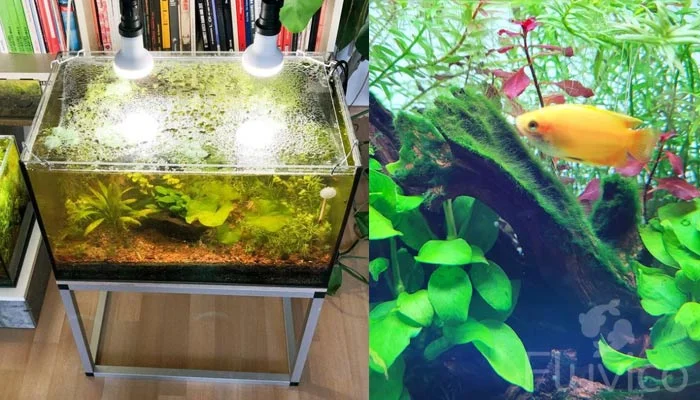
Habitat and Tank Setup
Tank Size
The proper tank size for honey gouramis is an essential aspect of their care, as it ensures they have enough space to swim, explore, and interact with their surroundings.
For a single honey gourami, a minimum tank size of 20 litres (approximately 5 gallons) can be suitable, but a larger space is always preferable. If you plan to keep a pair or a small group of honey gouramis, a tank of at least 60 litres (around 15 gallons) is recommended.
A spacious environment will contribute to their overall health and happiness, providing ample room for plants and decorations to mimic their natural habitat. Adequate tank size also allows for better water quality control, reducing stress and making the fish more resilient to diseases.
Water Parameters
Maintaining proper water parameters is vital for the health and well-being of honey gouramis. Here are the essential considerations:
- pH Level: Honey gouramis thrive in slightly acidic to neutral water, with a pH range of 6.0 to 7.5.
- Temperature: A consistent water temperature between 22°C to 28°C (72°F to 82°F) is ideal for these tropical fish.
- Hardness: Water hardness should be maintained within a range of 4 to 15 dGH, accommodating their preference for softer water.
- Ammonia, Nitrite, and Nitrate: Regular monitoring and control of these chemicals are vital, as they can be harmful in elevated levels.
Lighting and substrate
Lighting:
- Intensity: Moderate lighting is preferable, as too bright of a light can cause stress.
- Duration: A consistent daily cycle of around 12 hours of light and 12 hours of darkness mimics their natural environment.
- Type: Standard aquarium LED lighting usually suffices, but full-spectrum bulbs can enhance their colouring.
Substrate:
- Type: Soft, fine gravel or sand is ideal, as it mimics their natural riverbed habitat.
- Plants: Incorporating live aquatic plants will not only enhance the substrate but also provide hiding spots.
- Cleaning: Regular cleaning of the substrate is necessary to prevent harmful build-up of waste and bacteria.

Compatible pants and Décor
Floating Plants:
- Duckweed: Provides shade and helps mimic their natural habitat.
- Water Lettuce: Offers floating coverage and contributes to water quality.
Background Plants:
- Amazon Sword: A tall plant that creates a lush background.
- Vallisneria: Forms a dense background and provides shelter.
Stem Plants:
- Java Fern: Versatile and provides excellent cover.
- Anubias: Thrives in various lighting conditions and offers hiding spots.
- Ludwigia: Adds colour and texture as a stem plant.
- Hygrophila: Grows quickly and serves as a beautiful addition to the tank.
Décor:
- Rocks: Smooth and rounded rocks create a natural aesthetic.
- Driftwood: Offers hiding spots and adds to the natural appearance.
- Caves: Providing caves or shelters makes them feel secure and comfortable.
By including a variety of floating, background, and stem plants, along with natural-looking decor, you can craft an environment that not only pleases the eye but also caters to the honey gourami’s natural instincts and needs.
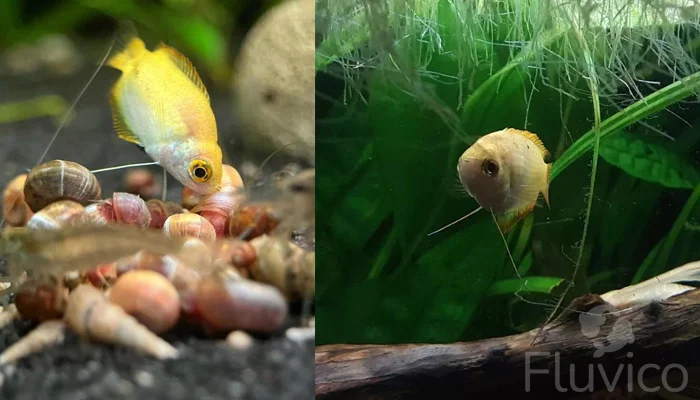
Honey Gourami Care
Feeding and Diet
Feeding and diet are crucial aspects of honey gourami care, as they have a direct impact on their health and vitality. Honey gouramis are omnivorous, and their diet should consist of a balanced mix of plant matter and protein. Here’s a guide to their dietary requirements:
- Flake Food: High-quality tropical fish flakes that contain both plant and animal ingredients are a staple.
- Live and Frozen Foods:
- Brine shrimp: Provides essential proteins and can be offered live or frozen.
- Bloodworms: An excellent source of protein and readily accepted by honey gouramis.
- Vegetables:
- Blanched Spinach: Offers important vitamins and minerals.
- Peas: Softened peas provide fibre and can aid in digestion.
- Feeding Frequency: Usually, feeding once or twice a day is sufficient. Only provide what they can consume within 2-3 minutes to prevent overfeeding.
Ensuring a varied diet that includes a mix of these elements will contribute to the honey gourami’s vibrant colours and overall well-being. It is also essential to observe their eating habits and make adjustments as needed to accommodate their specific needs and preferences.
Tank mates
Compatible Tank Mates:
- Small Tetras: Such as neon and cardinal tetras; peaceful and share similar water requirements.
- Corydoras Catfish: Non-aggressive bottom-dwellers that complement the honey gourami’s temperament.
- Rasboras: Generally peaceful and make suitable companions.
- Dwarf Shrimps: Such as cherry shrimp; can coexist without conflict.
- Other Gouramis: Other gentle gouramis can create a compatible community.
Incompatible Tank Mates:
- Large Cichlids: These can be aggressive and overpower the honey gouramis.
- Fin-Nippers: Species like tiger barbs that tend to nip fins.
- Very Small Shrimps: May become prey as gouramis might mistake them for food.
- Aggressive Species: Fish like Red-Tailed Sharks, Oscars, and Jack Dempseys known for their territorial or bullying behaviour.
By choosing tank mates that harmonize with the honey gourami’s gentle nature and avoiding those that can cause conflicts, you can create a thriving community within your aquarium. Attention to these compatibilities ensures a healthy environment for all inhabitants.

Same-Species Compatibility
Same-species compatibility refers to how well honey gouramis get along with other members of their own species within the same aquarium. Here’s a look at their compatibility with one another:
Compatibility:
- General Temperament: Honey gourami’s are generally peaceful fish that can coexist with others of their kind without major conflicts.
- Male to Male Interaction: Male honey gourami’s can sometimes display territorial behaviours, particularly during breeding. This can lead to occasional disputes, though serious aggression is rare.
- Female Interaction: Females are generally more tolerant of each other and can be kept together without significant issues.
- Male to Female Ratio: Keeping a balanced male to female ratio, such as one male for every two females, can reduce potential aggression and competition among males.
Considerations:
- Tank Size: Adequate space allows them to establish territories and reduce potential tension.
- Hiding Spots: Providing plants and décor for hiding can further minimize conflict by giving fish a place to retreat.
- Observation: Regular monitoring of their behaviour helps in early detection of any compatibility problems, enabling timely intervention.
Honey gourami’s usually exhibit good compatibility with their own species. While males may have some territorial tendencies, proper tank setup and attention to gender ratios can foster a harmonious environment. This makes them suitable for both single-species tanks and peaceful community setups, provided their specific needs are met.
Breeding
Breeding honey gouramis is a fascinating and rewarding aspect of keeping these beautiful fish. Here’s a guide to understanding the process:
Total Time: Approximately 9 to 13 weeks
1. Preparation for Breeding:
Selecting a Pair: Choosing a healthy male and female is essential.
Breeding Tank Setup: A separate tank with soft, slightly acidic water and plenty of floating plants provides an optimal breeding environment.
Diet: Feeding a high-quality diet with live or frozen foods helps condition the fish for breeding.
2. Breeding Behaviour:
Bubble Nest Building: The male will build a bubble nest at the surface, usually among the floating plants.
Courting Display: Males will show enhanced colouration and engage in a display to attract the female.
3. Spawning:
Mating: During mating, the male wraps around the female, who releases eggs, which the male then fertilizes.
Egg Care: The male gathers the eggs into the bubble nest.
4. Post-Spawning Care:
Separate the Female: After spawning, it may be wise to remove the female to avoid aggression from the male.
Egg and Fry Care: The male guards the eggs until they hatch, usually within 24-48 hours. Once the fry are free-swimming, it’s recommended to remove the male.
Feeding the Fry: Fry can be fed infusoria or specially prepared fry foods.
5. Growth and Development:
Water Quality: Keeping the water clean and stable supports healthy growth.
Gradual Introduction to Main Tank: Once large enough, they can be introduced to the main tank or other appropriate accommodations.
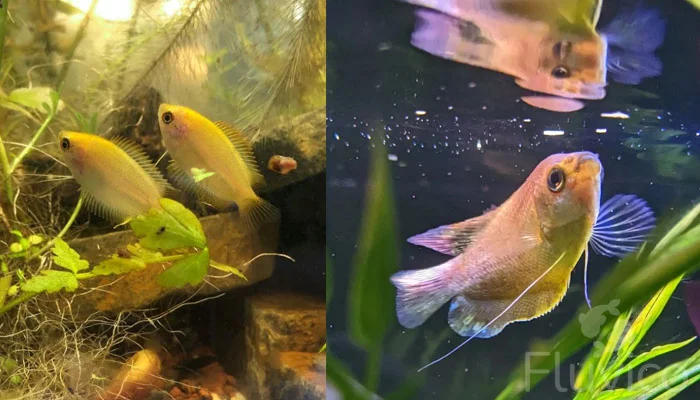
Common Health Issues and Diseases
Honey gourami’s, like all fish, can be susceptible to various health issues and diseases. Proper care and attention to water quality can prevent many of these problems, but it’s vital to be aware of the common issues:
- Ich (White Spot Disease):
- Symptoms: White spots on the body and fins, lethargy.
- Treatment: Raise water temperature and use ich-specific medication.
- Fin Rot:
- Symptoms: Fins appear ragged, frayed, or discoloured.
- Treatment: Improve water quality, and use antibiotics if necessary.
- Bloating:
- Symptoms: Swollen abdomen, difficulty in swimming.
- Treatment: Adjust diet, consider specialized medication.
- Impaction:
- Symptoms: Lack of bowel movements, discomfort.
- Treatment: Feed high-fibre foods like peas, consider laxatives designed for fish.
- Fungal Infections:
- Symptoms: Cotton-like growths on the body.
- Treatment: Use antifungal medications.
Prevention is always the best medicine. Regular water testing, maintaining proper water parameters, offering a balanced diet, and promptly addressing any visible signs of distress can greatly reduce the likelihood of these issues. If symptoms do appear, proper diagnosis and treatment, possibly with the assistance of a veterinarian specializing in fish, can usually resolve the problem and restore the honey gourami to health.
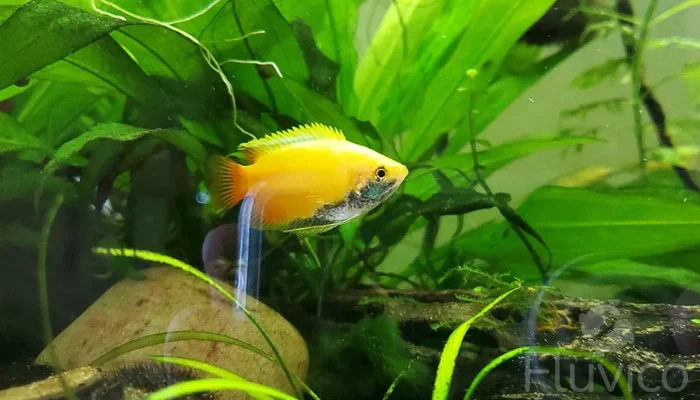
Should you get a Honey Gourami For Your Aquarium
Deciding whether to get a honey gourami for your aquarium depends on several factors, including your preferences, tank setup, and level of commitment. Here’s an analysis of the benefits and drawbacks:
Benefits:
- Peaceful Nature: Their calm and friendly temperament makes them suitable for community tanks.
- Attractive Appearance: Their beautiful colouring and graceful movement add visual appeal.
- Hardiness: They are relatively easy to care for, making them suitable for both beginners and experienced aquarists.
- Engaging Behaviour: Watching their natural behaviours can be fascinating and enjoyable.
Drawbacks:
- Dietary Needs: Their omnivorous diet requires a balance of plant and animal matter.
- Sensitivity to Water Quality: Maintaining proper water parameters is essential for their well-being.
- Compatibility: Care needs to be taken in selecting suitable tank mates and avoiding aggressive species.
Conclusion: Honey gouramis can be a delightful addition to an aquarium, adding beauty and serenity. While their care requires attention to diet, water quality, and compatibility, their peaceful nature and stunning appearance often make the effort worthwhile. If you’re prepared to meet their needs and appreciate their unique characteristics, a honey gourami may be a wonderful choice for your tank.
FAQ
Can I keep 1 Honey Gourami?
Yes, you can keep a single honey gourami. They can live alone without any issues, but providing a proper environment and meeting their specific care needs will ensure their well-being.
How many Honey Gourami should be together?
Honey Gouramis are not typically schooling fish but can be shy. It’s advisable to keep them in groups of at least 6 to reduce stress. Ensure that tank mates are compatible with this species.
Do Honey Gouramis get aggressive?
Honey gouramis are generally peaceful fish, but males may display mild aggression towards each other during breeding or in overcrowded conditions. Proper tank setup and compatible tank mates can mitigate this behaviour.
Can Dwarf and Honey Gouramis live together?
Yes, dwarf and honey gouramis can live together in a community tank. Ensuring enough space and providing suitable hiding spots helps maintain harmony among these peaceful species.
Why is my Honey Gourami turning black?
Your honey gourami turning black may be due to stress, triggering melanin production. It could also indicate poor water quality or disease. Careful evaluation of water parameters and overall health is advised.
More Reading

15 Types of Cryptocoryne: Which is Best For Your Aquarium Setup?

16 Awesome Low Light Aquarium Plants (Mosses, Ferns & Stem Plants)


18 Types of Aquarium Moss: Photos, Care, Propagation & Growth Guide
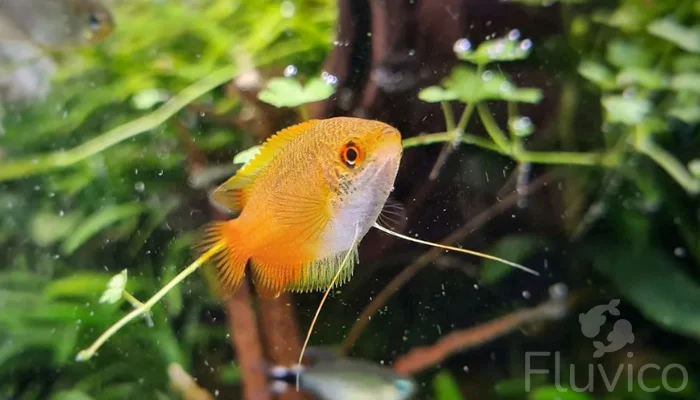

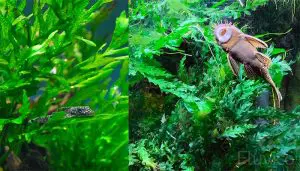

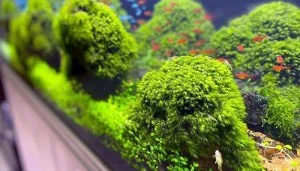
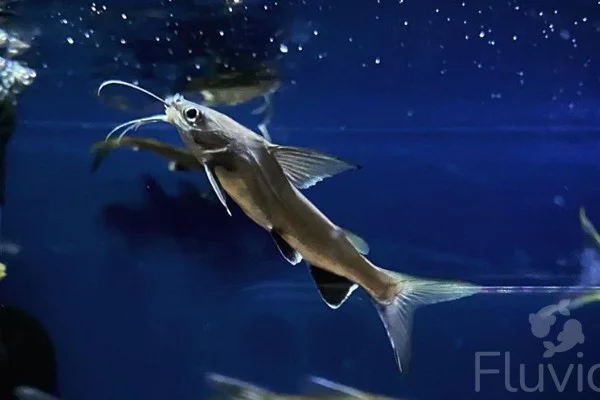
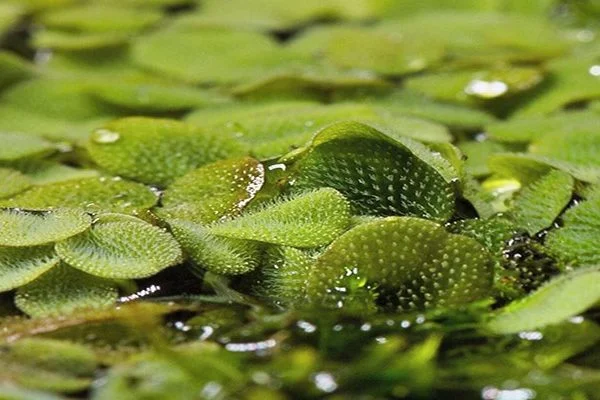
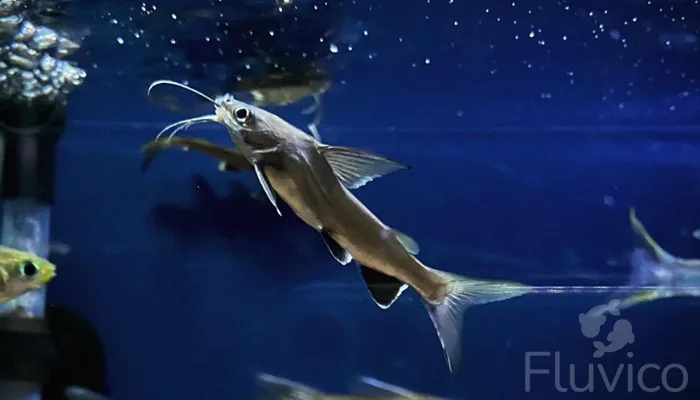
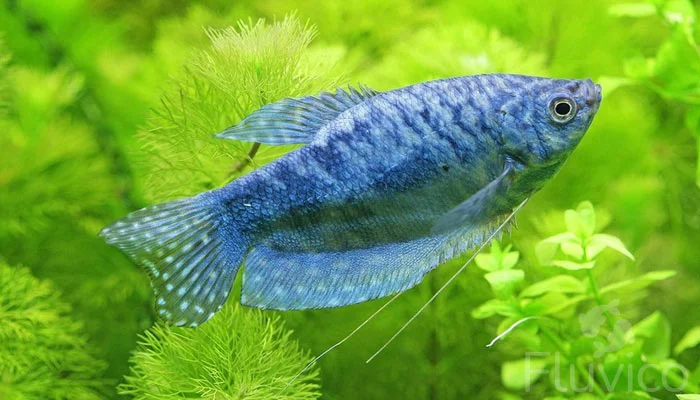
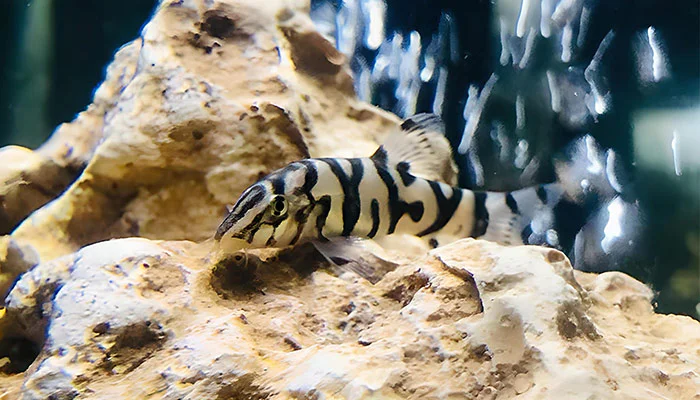

Hope you enjoyed our Honey Gourami Care Guide!
If you have any questions? Ask away, we’re here to help!
All the best,
Daniel